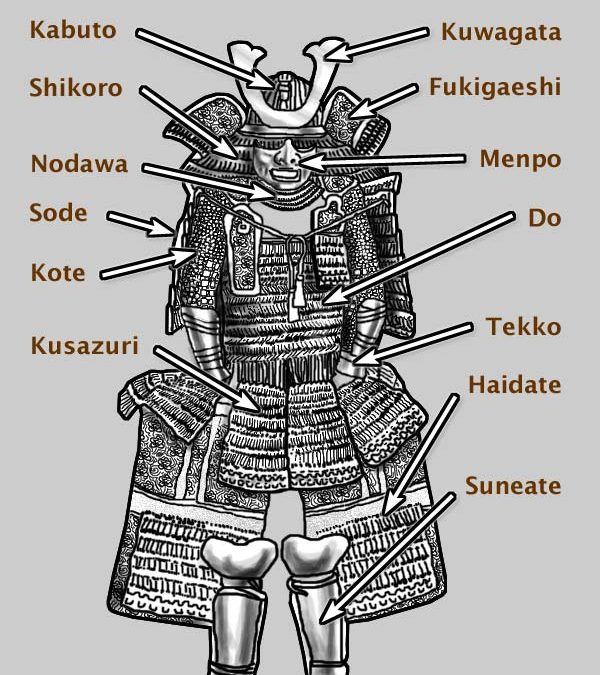What is the Nodawa?
The Nodawa is a fundamental piece of traditional Japanese armor, specifically designed to protect the warrior's neck and throat during confrontations. This crucial component of the armor, which takes the shape of a metal plate, gently curves around the neck and secures to the shoulders, providing vital protection in one of the most exposed areas of the body in combat.
Beyond its physical protective function, the Nodawa also acts as a type of high collar, shielding the warrior from cold winds and rain, making it a practical element in the context of Japanese weather. Its design was not only focused on defense; over the centuries, the Nodawa also evolved aesthetically, incorporating a variety of styles and decorations. These embellishments often include intricate motifs of dragons, flowers, and other symbols that resonate with Japanese culture and mythology, adding a level of sophistication that elevated its value not just as protection, but also as a manifestation of art.

The Nodawa not only served as a protective element; it was also a symbol of status and rank within the Japanese army. Variations in its design and ornamentation could indicate the level of leadership or social position of the warrior wearing it. Thus, not only was the physical integrity of the combatant cared for, but their dignity and honor on the battlefield were also reflected.
Today, the Nodawa has become a piece of cultural and historical interest and can be seen in traditional Japanese armors used in ceremonies and historical festivals celebrating this rich heritage. Additionally, it is common to find it in museums that house collections of historical artifacts, as well as in private collections of Japanese armor enthusiasts.
This cultural legacy reminds us not only of the importance of the Nodawa as protection but also as a legacy of the rich martial tradition and aesthetics of Japanese history.
















